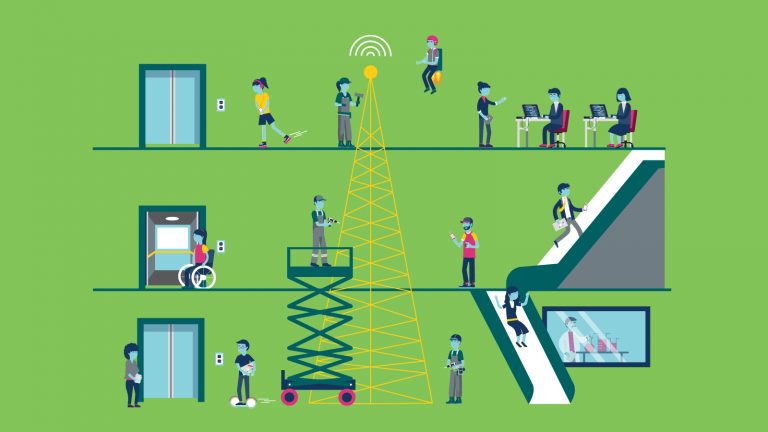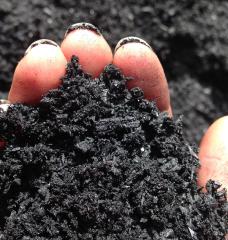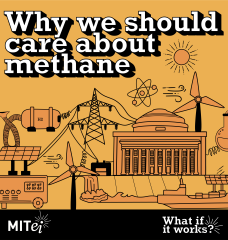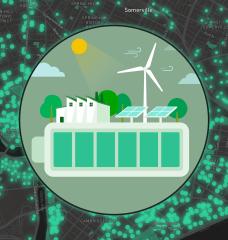
IoT and the Era of Ambient Intelligence
The Internet of Things (IoT) is changing much about the world we live in – from the way we drive to how we make purchases and even how we get energy for our health. Sophisticated chips and sensors are embedded in the physical things that surround us, each transmitting valuable data – data that helps better understand how these things work, and work together. But how do these devices share such large quantities of data? And how do we put that information to work? Whether we are improving the production of a factory, giving city residents real-time updates on where to park, or monitoring our health – it is a common Internet of Things platform that brings diverse information together and provides the common language to devices and apps to communicate with each other. The process starts with the device itself which securely communicates with the internet of things platform. This platform integrates the data from many devices and applies analytics to share the most valuable data with applications that address industry-specific needs.
The IoT is tremendously important to break the ‘AI Winter’ because an object that can represent itself digitally becomes something greater than the object by itself. No longer does the object relate just to its primary user, but it is now connected to surrounding things and database. In this way, many things act in unison in the IoT network and form a powerful ambient intelligence. To explain the ambient intelligence, let us pick a hypothetical example of a smart car. If a driver notices that her check engine light is on, she will need to have the car examined. But the problem might be minor or need immediate attention. After diagnosis, it was found that the sensor that triggered the check engine light monitors the pressure in the break line. This sensor is one of many monitoring processes throughout the car which are constantly communicating with each other. A component in the car called diagnostic bus gathers the data from all these sensors and then passes it to a gateway in the car. The gateway integrates and sorts the data from the sensors. This way only the most relevant diagnostic information will be transmitted to the manufacturer’s platform. But before sending this organized data, the car’s gateway and platform must first register with each other and confirm a secure communication. The platform is constantly gathering and storing thousands of bits of information from this car and hundreds of thousands of other cars building a historical record in a secured database. The manufacture added rules and logics to the platform. So, when that particular car sends a signal that its break fluid has dropped below a recommended level, the platform triggers an alert in the car. The manufacturer also uses the platform to create and manage applications that solves all specific issues. In this case, the manufacture can deploy an application on the platform called ‘asset management system’. This application oversees all of their customers’ cars on the road as well as all the parts in their warehouses. It uses the data from that car to offer the driver a potential appointment to service her car, direction to the nearest certified dealer, and a coupon for the service. Moreover, the manufacture also makes sure that the car’s breaks are covered under the driver’s warranty that the correct replacement part is ordered and then sent to the dealerships so it is ready when the driver arrives. But the manufacture’s analysis does not stop there. They have also deployed a continued engineering application that tracks not only this driver’s car but hundreds of thousands of other drivers looking for ways to improve the design and manufacturing processes of the car itself. If the same problem in the break line occurs in critical numbers of other cars, the manufacture uses applications custom-built for the automobile industry to pinpoint the exact problem. They can see if these cars’ parts are made of the same factory, use the same parts, or came off the assembly line on the same day. So, what do all these pieces add up to? Streamlined inventory management for the dealer for a better and safer car for the manufacture. And for the driver, she can be back to the road faster and get to where she is going safely all thanks to the Internet of Things.
People vs. Things
Although People is an integral part of IoT, it makes up a small portion of the group. However, there are some fundamental differences between Things and People which are discussed below:
A lot more Things than People: The IoT is a mega-network of connected ‘things’ and people. This massive network is built upon the relationship between people-to-people, people-things, and things-things. The application of IoT is increasing at an exponential level. For instance, there will be 20 billion connected devices by 2020 and 500 billion Things connected by 2024. The later number is nearly 100 times the number of people on the planet.
Things can be where People are not: Things can be in our stomach in the form of a smart pill. Things can be a mile underground in a coalmine. Things can be in the form of micro-robots at the bottom of the Atlantic Ocean. Things can be where people are not and probably will never be (or need not to be).
Things have more to say: To interact with computer people lean to input media, i.e., clicking a mouse, typing a sentence through the keyboard, capturing a photo through webcam, or scanning a document. But things have a voice beyond general comprehension. A typical cell phone has over ten sensors including sensors for altitude, acceleration, proximity, moisture, gravity and magnetometers, accelerometers and barometric pressure. Agricultural machines can have over 100 sensors and nearly every wind turbine has over 500 sensors.
Things can ‘Interact’ more often: the Internet of People generally produces data from either encouraging customers to purchase somethings or making it part of the recruitment process. Thus, people generally do not feed data into a human resource (HR), commercial purchasing, enterprise resource planning (ERP) or customer relationship management (CRM) applications.
On the other hand, a utility-based grid power sensor can send 60 data per second, a construction forklift one per minute, and a high-speed inserter one every two seconds. The coal mining industry has a machine called a long wall shearer. Now we have vibration sensors mounted on smart home roofs, which can send 10,000 data per second. Things can ‘interact’ much more frequently than a conventional living being.
Things are programmable, People are not: Modern machines will evolve to being a cluster of sensors and actuators connected to powerful computers. These machines can be programmed and much as people might like to – they cannot.
This introduces a paradoxical question: if Things are not People then why would the software built for the Internet of People work for the Internet of Things?
The IoT Framework
So, what will this new software look like? Like the Internet of People, it will involve many components. Figure 1 covers a vendor-agnostic framework that can be used by business and technical people. This framework is composed of five layers: Things, Connect, Collect, Learn and Do.
The first component of the IoT Framework is composed of Things (or Machines or Equipment). Thus, these elements are often interchangeably and are Connected to the Internet. Once things are connected, the dataset is Collected at regular interval. Thus, Collect refers to the designated technologies send time-series data every hour, a minute or second. The next unique component of the Framework is Learn. This component in IoT application differs from that of IoP (Internet of People), that focused on gathering data manually. In IoP application, the system will collect data constantly which can learn the pattern or user behavior of Things at industry, hospital, farm, or mine. After learning, the Do or the outcome part comes. Do recounts both the software application & machine learning technologies and socio-business models which are affected by the organizations that build Things, i.e., technology parks, innovation hubs, social media, investors, and manufacturers. This may also include the organizations that deliver the output, i.e., transportation, healthcare, and construction services.
Things: Things refer to the machines or equipment for construction, transportation, healthcare, power or agriculture. Things can include blood analyzers, Heating, Ventilating, and Air Conditioning (HVACs), elevators, industrial printers, gene sequencers, locomotive or water chiller. Whereas the previous-generation machines were mostly labor-based, the next-gen machines are more software-focused. For instance, the GTS, Turbo, and Hybrid models of the Porsche Panamera have 100 million lines of code (a measure of the amount of software) whereas the previous-generation models had only 2 million lines. A third-generation high-performance sedan now has more electrical function and computing power than an F-22 Raptor Stealth Fighter.
While we argue about the efficacy and ubiquitous presence of AI and automated machines, we cannot deny the importance of software which is defining the machines. Healthcare industry is another sector that has become software-dependent. A drug-infusion pump contains more than 200,000 lines of code and an MRI scanner has more than 7,000,000 lines. A modern boom lift on a construction site may have 40 sensors and 3,000,000 lines of code and a modern combine-harvester on a farm may have 5,000,000 lines of code.
Connect: The modern generation now enjoys 4G cellular networks and Wi-Fi connections. Things will require much more diverse but versatile connection technologies. They will be a wide variety of distance, power and bandwidth requirements. Consider the case of Sensium Vitals, which builds a vital sign-monitoring patch. Their design criterion was to not use disposable battery packs, as those would have to be washed and recharged. Instead, they decided to use disposable batteries. Unfortunately, that meant there was not enough power to drive a Wi-Fi network, so they chose to use a mesh network similar to Zigbee. There has been significant innovation at the low bandwidth end like NB-IoT, or LoRa or SgFox as well as the high bandwidth end.
Collect: There is a distinct difference between Things and People. IoP applications can deal with human intelligence and emotions, whereas IoT applications work with an exponentially larger volume of data produced from its artificial intelligence and pattern recognition. This data can be collected, stored, redesigned, and reused using SQL, NoSQL, traditional time-series and next-generation time-series collection architecture. These will inevitably all be cloud-based infrastructures which will require new IoT software management for an order magnitude larger than computing and storage architecture.
Learn: Big data, machine learning, and synchronization are increasingly more popular with the increasing amount of data coming from Things. Learning and analyzing the product & raw data consist of query and machine-learning technologies (both supervised and unsupervised). Because historically we have been relying on IoP applications where most of the technologies applied to learn from data streams have been directly or indirectly applied to learning from data about people. New software-based AI and machine learning platforms will need to be used to learn from thousands to millions of machines, which generate data from hundreds of sensors delivered to the system every second.
Do: Like the IoP applications, IoT will have both packaged applications (e.g., Enterprise Resource Planning (ERP), Customer relationship management (CRM)) and middleware or distributed applications. However, if we consider from a business perspective, these applications – whether bought, built, or purchased – have to deliver business outcomes.
With an increased amount of data fed into the system, machines are now becoming increasingly complex and software-dependent. As the automated machines are now using artificial intelligence (which is the exact simulation of human intelligence without emotion), many of the lessons and iterations learned in software maintenance and services will also apply to the cybernetics and automated machine systems. To meet this rising trend, software-as-a-service has revolutionized the industry. If machines are becoming more software-dependent then maybe we can learn from software business models to predict the future business models for machines. The application of the machines aka the software has three fundamental business models: product & disconnected service, product & connected service, and product-as-a-service (PaaS).
For example, if we want to deliver a car-as-a-service (CaaS), we can take examples of Didi, Grab, Lyft, and Uber and charge per ride as they do. The most expensive component of the ride is the cost of human labor, which is also the most expensive component of managing traditional on-premises software. This is the reason why automation is important to transforming the car industry as it has already transformed the computing, storage and software business.
Changing the World
So how might all of this software change the world?
After 2030, emerging economies will be the main driving force of the global digital economy. Emerging economies are population-driven, which is why Africa, Latin America, South Asia, and Southeast Asia are interesting. For example, Africa is expected to house more than 50% of the world’s population between 2019 and 2050. With 401 million population, Nigeria will be the third most populous country in the world before 2050. Democratic Republic of Congo, Ethiopia, Kenya, and Sudan will have respectively 195.3 million, 188.5 million, 95.5 million, and 81 million population by 2050. Countries in South Asia will have tremendous population growth in 2050 – India will have 1.73 billion people, Pakistan 403 million, and Bangladesh 265.8 million. Countries in Southeast Asia are also projected to experience a massive population boom. By 2050, Indonesia will have 327 million population, Philippines 157.1 million and Vietnam will have a population of 112.8 million with an average age being just 30 years old.
To sustain this economic growth and technological development, the developing economies will need substantial infrastructures, i.e., agriculture, construction, healthcare, power, telecommunications, transportation, and water. But unlike that of the #firstworld way, we will have to adapt to newer technologies with the contextualized application. For example, if we want to establish a telecommunication network in Rwanda, we would directly install the fifth generation 5G cellular network instead of old-generation landlines.
Some of the sectorial impacts in developing countries are summarized below:
Power and Utility: The power & energy sector will also see a tremendous change. The world is already shifting from archaic coal-fired based centralized power plants and power generation and distribution networks. In this changing world, we are now moving to build a distributed energy grid for battery storage, solar, wind, and hydroelectric generators which are all software-administrated. In the future, we will also never consider to go for AC power and build a DC power grid.
HR Management: In terms of being cost-effective human resource outsourcers, countries may focus on building their unique competency. Modern human resource management may focus on using computer-generated datasheet to record, evaluate and recognize the proper employees. For example, the city municipals may adopt interconnected cleaning technologies to collect data from the sweepers and be able to deliver information on how to best achieve or optimize performance and ensure real-time availability.
Farming and Manufacturing: In terms of farming, we can take the example of shrimps. With increased demand, shrimp producing counties such as China, Thailand, Vietnam, Indonesia, and India are opting for creating hybrid and branded shrimp, which will carry a higher premium. Branded shrimp would require quality control, which translates to fully instrument the shrimp farms. Based on connecting and learning from the environment and the shrimp farm machines, these countries may optimize and control the quality of the shrimp.
Textiles: The developing countries like, Bangladesh and Vietnam are the major producers of textiles. In fact, China now outsources textile manufacturing to Bangladesh and Vietnam since the labor rate is cheaper in these countries. Since these countries are leading the sector, they may engineer the next-gen software-enabled textile machinery that may connect and collect data to learn how to optimize and maximize textile manufacturing. Besides meeting the native purpose, the countries may also export the machines to other countries.
Healthcare: It may be difficult for emerging economies to directly adopt a #firstworld healthcare system by building accessible medical care facilities and numerous medical colleges and hospitals. But this may provide an opportunity to re-think the healthcare module. Nowadays we do not need to deploy machine operators for every medical apparatus. The machines and can be monitored and controlled through a centrally connected server network. Sadly, however, in the 21st century, a pediatric cardiologist does a consultation by receiving an MRI scan (Magnetic Resonance Imaging) via mail, putting it into a CD-ROM tray in a tower PC, and watching the streaming 4K video on the smartphone.
What if we could connect all of the healthcare machines? We could reimagine connecting the consumer internet to the 500,000 machines which could dramatically change the childcare healthcare. It is, however, unfortunate that most of IoT focus in the healthcare industry is concentrated on the EMR (Electronic Medical Record) or EHR (Electronic Health Record) applications, where medical professionals spend their valuable time by feeding data into the archaic pre-internet applications. But the massive dataset, which will power the AI applications is absent. Several medical applications where such data can be stored, fed and used for further applications are gene sequencers, CT (Computed Tomography) scanners, blood analyzers, and ultrasound machines.
Conclusion
These are just a few examples that show the magnitude of changes made by the IoT. Next-generation IoT platforms can transform the planet in everything from water to transportation, power to healthcare, and agriculture to textiles. In the last 19 years, the revolution of the Internet of Things has redefined business-to-business (B2B) and business-to-consumer (B2C) industries such as retail, media, and fintech services. By 2030, IoT will dramatically alter agriculture, construction, healthcare, power, transportation, and other industrial sectors, which will jointly account for nearly two-thirds of the global GDP. By 2050, computer programs will write news and poetry, robots will perform neurosurgery, fintech will take over paper-based currency, bots will administrate the offices, and mega-states will have libertarian governments. The makers, drivers, and enablers of these mega transformational trends will be ubiquitously driven by the IoT.
IoT has the potential to change the world – the real world. And unless we are all moving to Mars, we will have to embrace the blessings of IoT and operate its things much more precisely. The change in socio-economic and technological area is inevitable. How we are going to embrace the change – is up to us.






